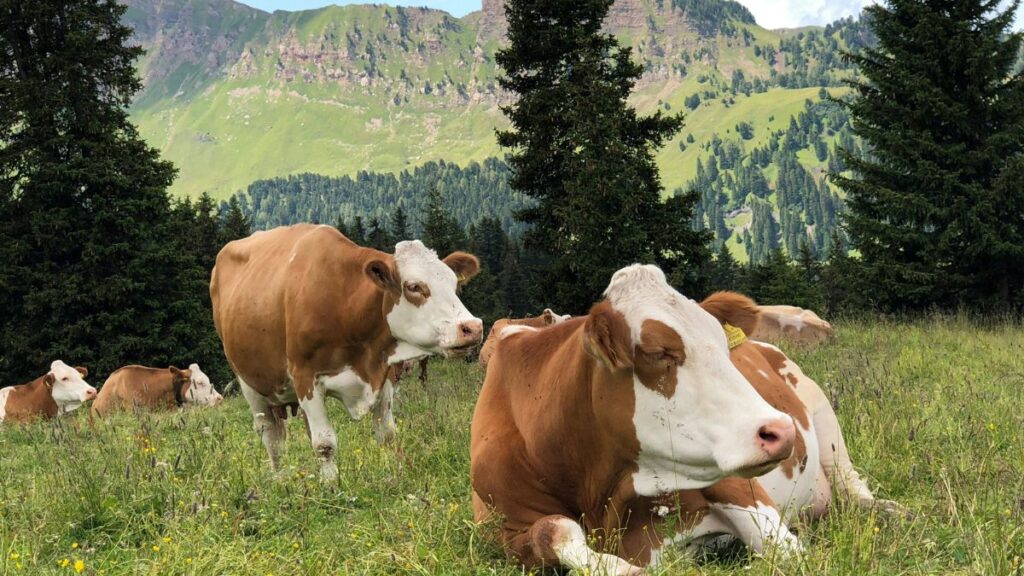
Global demand for animal protein is rapidly increasing, leading to a significant rise in meat and fish production. This surge has driven the expansion of animal farming to the point where almost a third of all land is now used for raising livestock, contributing significantly to carbon emissions.
Search
Recent Posts:
- OpenAI Brings ChatGPT to be used in WhatsApp: Here’s How It Works and What You Can Do To Use It.
- Realme 14x 5G: A Budget Smartphone With Premium Features.
- Exploring Apple Genmoji: A New Era of Custom Emoji Creation.
- 2024 United States Presidential Election: Donald Trump Declares Victory in 2024 Presidential Election
The Scale of Animal Slaughter
According to 2021 FAO data, the scale of animal slaughter to meet this demand is staggering: 900,000 cows, 1.4 million goats, 1.7 million sheep, 3.8 million pigs, 12 million ducks, and 202 million chickens are slaughtered daily for human consumption. Additionally, an estimated 211 million fish are killed daily, though fish stocks, production, and consumption are usually reported in tones, making exact numbers variable.
Annually, nearly 100 billion farmed animals are killed worldwide for human consumption. This mass production is environmentally unsustainable and alarming in scale. Over 70% of bird biomass consists of poultry livestock, outweighing wild birds by more than 3 to 1. For mammals, the disparity is even greater: almost 95% of global mammal biomass, excluding humans, is livestock, outweighing wild mammals by a factor of 15 to 1.
The Pressure On Land
Approximately 45% of the world’s habitable land is used for agriculture, with only a third of this land growing crops for direct human consumption. The rest is primarily grazing land. Additionally, half of the cropland is dedicated to growing animal feed and biofuels. This means the majority of the world’s cropland is used to support livestock for meat and dairy production. Monoculture crops for animal feed lead to soil degradation, further exacerbating environmental issues.
The Risk Of Disease In Livestock
As demand for animal protein grows, farms face significant challenges. The increasing populations of cows, chickens, and pigs are often kept in cramped and unhygienic conditions, raising the risk of epidemic-level viruses spreading. For instance, African swine fever (ASF), which has a 100% case fatality rate, has killed one in four pigs worldwide since its first detection in 2018. According to FAO’s 2023 outlook, the global impact of ASF has led to a decrease in demand for pork and a corresponding increase in demand for poultry.
Resistance To Antibiotics Among The Livestock
The excessive use of antibiotics in livestock farming, particularly in poultry, has led to a rise in antibiotic resistance. Antibiotics are often used to promote growth and prevent illness in overcrowded conditions. This overuse allows antibiotic-resistant bacteria to thrive and spread, passing from livestock to humans via food. This impacts the effectiveness of life-saving antibiotics when humans fall ill.
Climate Chaos
Weather extremes severely impact farming, but the loss to livestock often goes unrecognized. Freak storms, floods, and forest fires can devastate farms and kill animals. For example, heavy rains and floods in East Africa in June killed almost 10,000 farm animals and contaminated rivers, lakes, and ponds, sparking fears of a food crisis.
Emissions and Impact On The Environment
The cattle industry is a major contributor to greenhouse gases (GHGs), primarily through methane production from livestock digestion and manure management. Methane is a more harmful GHG than carbon dioxide. Additionally, deforestation for grazing land, fertilizer use, and fossil fuel consumption in meat production processes all contribute significantly to GHG emissions. Beef production has the largest emissions footprint, followed by lamb, pork, chicken, eggs, and fish. About 26% of global GHG emissions come from food production, with livestock and fisheries contributing almost a third. As the human population grows and meat consumption increases, the environmental impact of our food choices cannot be ignored.
Potential Solutions
Business as usual is not a sustainable option for the future of animal farming. It is essential to leverage science and technology to innovate and improve how meat is sourced.
Eat Less Meat
Reducing meat consumption is almost always better for the environment and health than current options for lab-grown meat. Today’s lab-grown meat falls into the highly processed foods category and has not impressed consumers after the initial novelty wore off.
Cellular Agriculture
“Cellular agriculture,” or tissue engineering, involves farming cells and growing meat from them. This method, under research in labs worldwide, aims to produce meat from cells extracted from animal organs and grown in a lab. Bioengineer Isha Datar, a pioneer in this field, argues that we already consume several cell culture products in the form of vitamins, flavors, and enzymes. If the goal is to feed more people using less land, without emitting GHGs or killing animals, science must provide the answer.
To read more topics, please visit: https://insightfulbharat.com





